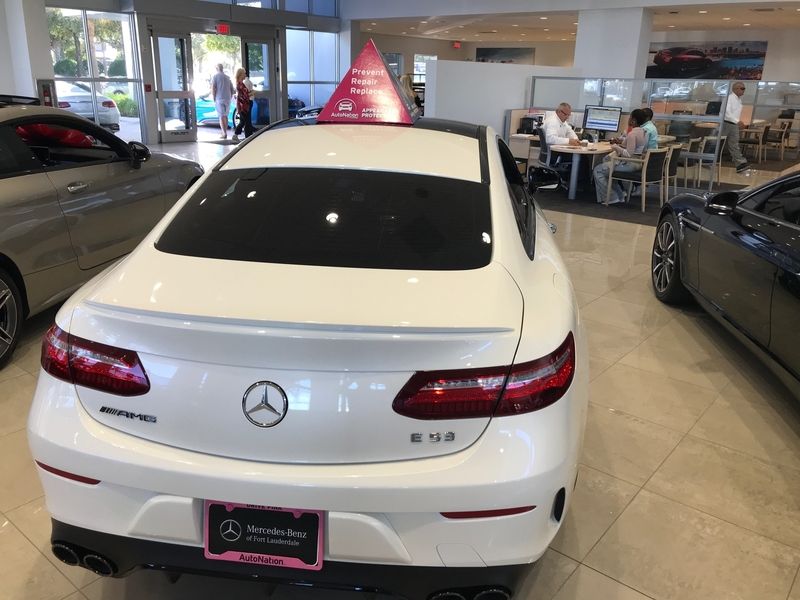
In another quarterly earnings cycle studded with record gains amid the ongoing coronavirus pandemic, finance-and-insurance profits at all six public new-car retailers stood out as a leading driver in 2020’s fourth quarter.
Despite dwindling new- and used-vehicle inventory, virus constraints and an increase in digital transactions, F&I profits continued to climb at the industry’s largest public new-car retailers. Robust profits in the back half of the year were enough for half the publics to eke out stronger full-year profits over 2019.
AutoNation Inc., of Fort Lauderdale, Fla., boosted fourth-quarter F&I profit per vehicle retailed 11 percent to a record $2,209. Sonic Automotive Inc.’s record finance and insurance gross profits were most improved over the previous year’s quarter, surging 12 percent to $1,855 on a same-store basis. In total, the Charlotte, N.C., company’s F&I profit per vehicle eclipsed $2,000 for the first time in the fourth quarter, Sonic President Jeff Dyke told analysts and investors on a Feb. 17 call.
“[We] continue to expect growth in this area in 2021,” Dyke said.
Sonic is predicting “low, double-digit growth” for F&I gross this year, CFO Heath Byrd also said on the call.
“We continue to see opportunity to increase our [gross per unit] and even continue to surpass the $2,000 per unit,” Byrd said.
The other public groups reported these results in same-store F&I profit per vehicle:
- Group 1, of Houston, up 10 percent, or $190, to $2,027
- Asbury Automotive Group, of Duluth, Ga., up 7.4 percent, or $126, to $1,817
- Lithia Motors, of Medford, Ore., up 7.6 percent, or $115, to $1,635
- Penske Automotive Group, of Bloomfield Hills, Mich., up 10 percent, or $139, to $1,475
Daryl Kenningham, president of U.S. and Brazilian operations at Group 1, told analysts Feb. 4 that dealership employees overcame lower inventory challenges through a disciplined approach to gross margins. Selling vehicles online also didn’t negatively impact the company’s profits.
About 11,000 of the company’s vehicle sales were done through its digital retailing tool, AcceleRide, which Kenningham said had front-end and F&I grosses comparable to in-store profits.
Lithia Motors announced several innovations in the fourth quarter with its omnichannel retailing tool Driveway that will impact F&I profitability. Omnichannel is a retailing process that offers customers a seamless buying experience whether they shop online, in-store or both.
The nation’s third-largest public new-vehicle dealership group integrated financing options from 29 auto lenders and added F&I product offerings into the tool in the fourth quarter, CEO Bryan DeBoer told investors Feb. 3. Among them is its own captive lender, now called Driveway Finance Corp.
“We achieved our most crucial milestone by providing consumers with a complete end-to-end digital shopping solution with consumer-driven, fully automated checkout,” DeBoer said. “With this functionality, consumers can choose to complete their entire life cycle of vehicle ownership from the comfort of their own home and never set foot in a traditional dealership again.”
DeBoer said the ability for customers to purchase F&I products at all also would drive growth for Driveway service business, “to get us the volume necessary to drive down our costs and ultimately have that full life-cycle serviceability to a consumer in their home.”
Asbury plans to roll out its Clicklane tool to all of its stores in the first quarter, and CEO David Hult said the three stores using the platform at the time of its earnings produced strong F&I results.
“It’s a small number of stores, but when you look at it, the F&I numbers overall look amazingly well,” Hult told Automotive News.
F&I product provider JM&A is integrated into the Clicklane site, which allows F&I product offerings tailored to VIN-specific vehicle purchases. Presenting F&I information and purchase options in the most effective way is an ongoing process, Hult said, though he’s pleased with the results so far.
“We’re doing a good job with our descriptions on the products,” he said. “I would say we’re working on better material to enhance the experience for the consumer.”
Though many of the public groups saw record F&I profits in the third and fourth quarters, the pandemic’s hit on vehicle sales and profitability in the second quarter was enough to drag down full-year F&I profits for several groups.
AutoNation increased F&I profits 4.6 percent in 2020 to $1.06 billion. Sonic’s F&I profits rose 1.2 percent in 2020 to $335.7 million, while Lithia’s rose 0.9 percent to $504.2 million.
Group 1’s full-year 2020 F&I profits fell 4.2 percent to $412.8 million and Asbury’s dipped 3.4 percent to $305.1 million. Penske’s profits dropped 11 percent to $566.1 million.
Melissa Burden contributed to this report.

